Few years back, I had published question-answers I produced for the position of e-Governance and Reporting Expert with UNDP for the program Local Governance and Community Development Programme (LGCDP)/Transition to Subnational Governance Programme(TSNGP). In that context, I recently got an opportunity to appear for Information Technology (IT) and e-Governance Specialist with UNDP for the same but now called as “Provincial and Local Governance Support Programme (PLGSP)”. I’m sharing the insights into 3 strategic (to somehow strategic) questions that I provided.
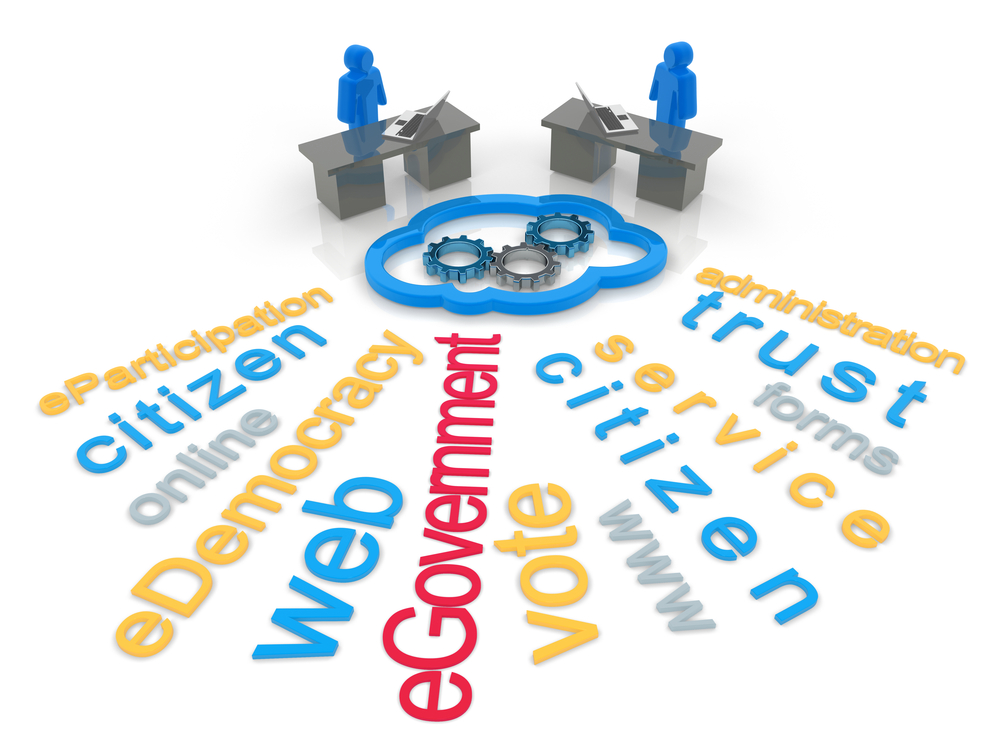
It is equally true that the information and community technology (ICT) has brought about unprecedented opportunity for the local governments to capitalize on. In this context, suggest your strategy on how the local governments should make use of the ICT to deliver their functions effectively. The strategy should also include the risk and challenges in its implementation. – Read answer to Q1
Q2. What are the key considerations you will factor in while designing any e-governance system for provincial governments in the context of Nepal? How would you ensure vertical and horizontal data integration and information sharing capability of such system and why it is important? Justify your answer with the suitable examples. – Read answer to Q2
Due to long contextual answers provided to the each questions (Q2 and Q3), the answers are provided in the next pages. Kindly navigate to next pages or click each question to take you to those answers directly.
You can also read other e-Governance categorized articles that I have published here.
Q1. The Constitution of Nepal has not only given constitutional status to local governments but also has entrusted them with major service delivery roles for the first time in Nepal’s long decentralization history. It is generally believed that the local governments have a long way to go to internalize those roles and provide services to their residents in an inclusive, transparent and accountable manner.
It is equally true that the information and community technology (ICT) has brought about unprecedented opportunity for the local governments to capitalize on. In this context, suggest your strategy on how the local governments should make use of the ICT to deliver their functions effectively. The strategy should also include the risk and challenges in its implementation.
Strategic implementation of ICT at Local Governments
After a debate and discussion, we finally have a common framework and understanding for coordination and coherence of the governance approach at all levels of the government forms the federal to the provincial and to the local level. The execution and operation of governance should be of utmost priority for the federalism to be successful. While addressing all the shortcomings of previous structures, the new local governments should incentivize every facets of the government to make effective use of the Information and Communication Technologies (ICT). There is no alternative to not using ICT to effectively address governmental functions for the service delivery at all levels of governance.
In this regard, strategic implementation of ICT at local governments should be deployed gradually based on capacity and skill of both the service seekers and service givers. Let us discuss an effective strategic implementation approve for effective service delivery at the local government levels for realizing the e-governance at all levels possible.
Identification of need
An informed society is no doubt an empowered society. Only those informed people can make an accessible and successful governance. Initial strategic development for realizing e-governance includes identification of the need as the first step in effective service delivery and the service consumption. Any plan made without considering consumers (here effectively citizens) might fail if identification of their need is not considered and rather deployed from the service delivery side – this is other idea of asking people suggest their strategy or ideas on how the local governments should make use of the ICT to receive government functions effectively.
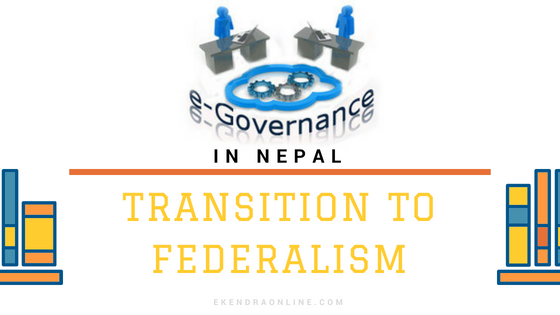
Service seekers, precisely those citizens who are in need, need to be identified, studied and concisely explored for their need. Once the needs – here the e-governance features that citizens really need at the first level of intervention – are identified we could proceed forward to the next level of e-governance strategy.
However, this comes at certain risk and challenges in its implementation as identifying and normalizing citizen’s egovernance need is a daunting task. Plus, geography and economy of the citizen’s location vary the what their responses are. True democracy of participation of each individual citizen should be practiced as much as possible.
This presents us with the opportunity to find what citizens are up to, and at what level we are currently in the state of egovernance of ICT-enabled services being delivered to the citizens.
Capacity building
At this stage, we have identified what ICT-enabled services should be delivered to the stakeholders and participants, that provides us with the prospect of where we stand. Based on the service deliverer’s part (that is what we are), it is now our opportunity to work on building capacity of our governance structure and infrastructure for the ICT projects. Identification of citizen’s need helps us understand where our capacity needs to be built and be prepared for the next level of digital or electronic service delivery.
Capacity building in ICT-based doesn’t necessarily means a quantum jump in e-governance and ICT4D for Nepal but this is quite possible only due to the implementation of the ICT component so hence the capacity on this aspect. Skilled manpower to the ready-to stand ICT infra is what we need at this level while the required services are being designed, and build. This parallel approach helps us understand the requirement of how our human resource are capable to handling the next generation of the service delivery modality.
Once again, the risk and challenge factors are to be mandated as on the current scenario, we have a huge proportion of a manpower that is not used to using ICT for the service delivery. For some this might be an opportunity to grow not individually but also at an enterprise level. However, for some aging resources, this may come with a challenge- nevertheless we could always make them work for some support mechanism.
In this regard, nothing is being wasted we should only be able to reshuffle the resources while being the best out of the skilled and capacitated service deliverers.
Deployment
Now that we are ready to deploy several ICT-enabled government services at several levels of governance. Some deployment models engage citizens while others engage business and government units – all variants of G2X, where X be citizens, business, governments and even cross operability of government (or cross governments) should be considered.
Deployment of government catered services is a harmonization and transition of their services from one level of deployment to the other. Both the service seekers and delivery aspects should be transitioned seamlessly as much as possible.
Some identified risk includes readiness of migration in services or difficulty due to ICT infrastructure and the geography. Sometimes it is the ICT info security and policy compliance. However, these risks could be addressed at government operation level and challenges could be uplifted as opportunities for the deployment of ICT-based government services.
Knowledge sharing
Another important aspect of e-governance realization is true knowledge sharing in both vertical and horizontal aspect. When we have a better knowledge society, we can patch the short comings of the strategic ICT implementation at all facets of the governance, for an ERP just to be an example.
Horizontal knowledge sharing helps other G2G units learn and adapt the new needs of ICT-enabled services, while the vertical helps citizens understand several services provided to them. Nevertheless, these knowledge sharing pattern can always be changed as required because the goal is to have effectiveness in ICT implementation.
The risk sometimes in knowledge sharing strategy is not all services delivered via the use of ICT are at reach of needy citizens and hence their knowledge of understanding might differ from others. Similar situation exist at the government levels as well, not all service providers at one government unit can understand the provisioning of services at the other end. This is an opportunity when we can make skilled human resource rotate to explore all facets of the digital or electronic services being delivered at different levels of governance.
Integration
Stronger ICT makes stronger responsibility and financial reporting for the government units while citizens receive better services to foster the economic prosperity. In order to bring in better accountability and governance harmony in the ICT-enabled service delivery with the citizens and the inter-governmental agencies, each level of governance should exercise their integration modality.
Our systems should be well equipped to integrate all facets of the government’s services, they should be linked with the unique identification for each citizen to be able to grab opportunity of the e-governance and ICT realization.
Gone are the days with isolated and scattered ICT-based applications that are claimed to be digital or electronic service delivery at governance level, with integration strategy all (should be possible when it is the government’s intent) levels of services should be integrated and citizens should be provided with least amount of hassles to receive government services. This approach provides service seekers the seamless integration of services and sharing of official identification or documentation required at the government’s need, while provides the government units unified decentralized services cater at a single point of delivery.
So far, the risk and challenges are concerned, the thorough integration of enterprise level integration might be a challenging job initially. With the level of integration of government business, this could be achieved gradually. The risk mitigation for failure of some businesses could be handled subsequently when the integrated enterprise resource planning gets matured over the time.
Sustainability
One of the main reasons why ICT-based government services fail at some point is lack of sustainability both from the service delivery and the service seeker’s side. Citizen’s not using those services for some reasons and the government units not using due to lesser number of users, change in policy, system or software upgradation issues and as such.
Sustainability should be considered tight and brought at this level of e-governance realization that no services once started be terminated unless they make no sense of having anymore. Thus, there are only the opportunities in maintaining and bringing in sustainability to the ICT-capabled government deliverables.
Q2. What are the key considerations you will factor in while designing any e-governance system for provincial governments in the context of Nepal? How would you ensure vertical and horizontal data integration and information sharing capability of such system and why it is important? Justify your answer with the suitable examples.
The information flow in the government systems can be unilateral, bilateral or even multilateral and the information systems should handle this flow properly. It is vital that all three tiers of the government – namely federal, provincial and the local -get connected to each other via dedicated information management systems. This should be the key to designing any e-governance system for the provincial governments in context of Nepal. As provincial governments provide linkage of the local units to the federal or the central government, they are the one to ensure both the vertical and horizontal lineage exist and are effective.
My answer to this question is based on an example how the information (as data by default do not hold any potential information) should flow in the system as the data integration approach provides citizens seamless experience of the newer federal system’s electronic service deliveries. Respecting the legal framework of federalism, a successful transition of electronic governance system is a must and follow these systems.
Automated office system at provincial level
Personally, I see any provincial governments should be a role model for other local governments to adapt and copy the best of in e-governance based on provincial systems. Since there is no current practice of information management and reporting system in provincial level due to the new structuring, the new adoption should flow with a simple yet effective information management system where multiple tasks can be automated, and business intelligence be achieved.
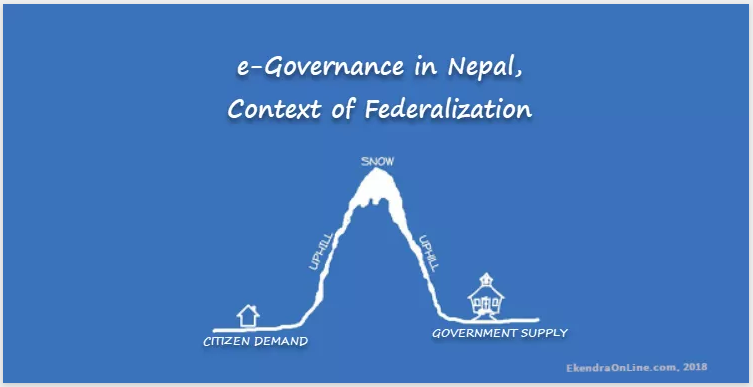
It is essential that all government actors are empowered and informed based on their capacities and are given opportunities to grow their service delivery approach. This directly relates with the institutional frameworks, policy frameworks, roles and responsibilities of the provincial government as they are directly accountable for and responsible of the local governments. They should leave the e-governance modality which could be trimmed at some levels or enhanced at others as per the need for the local governments to adopts.
Most of the administrative and data integration task should be automated leaving any manual intervention unless necessary. This can be a part of the larger MIS or a part that can help connect or fed the reporting system to share the information with the government tiers in the format they require.
Collaborative data collection and seamless reporting systems
e-Governance is the outcome and e-Government is the output of the process in which government services are delivered primarily to its citizens and secondarily to the business entities and other (external) government (G2X) using the power of information and communication technologies.
The provincial government that directly works with the local governments should help them find the broader aspect of e-Governance to include the usage of ICT at both the service seekers and the service delivery part, meaning a service seeker applying for the citizenship through the usage of ICT tools- for an example and a duty bear using ICT tools to deliver the readied form of the citizenship to the respective service seeker citizen.
Collaborative data thus collected from the local governments are fed to the provincial systems, crunched, normalized and then readied for decision support system (DSS). At this level of the e-governance system, provincial governments can assist local units for proper decision-making role and providing necessary feedback and suggestions for the federal government on, say, progress tracking or service delivery part of the tier below them.
When designing e-government system for the provincial level this part is crucial as it mandates data as the new asset and that is the basis for all newer economic prosperity and growth which helps us achieved informed decision making.
System usage, capacity development and support to the structures
The capacity enhancement to foster skills and capacity of government agencies and their stakeholders is a vital to realizing a good e-governance system. Provincial government, as is, should always assist the local governments to have implemented systems, deploy ICT-based services while fostering capacity of both the institutions and the human resources. They also have direct role of providing support to the structures that provision system realization at the local level.
The local governments given the principle of subsidiary as local government are the closes to people and service delivery mechanism that impact the most people’s lives on a daily basis – the provincial governments should constantly feed responses from the egov system to the former. They need to provide basic guidelines and regulation to improve their governance and service delivery systems, procedures and structures if not already in place.
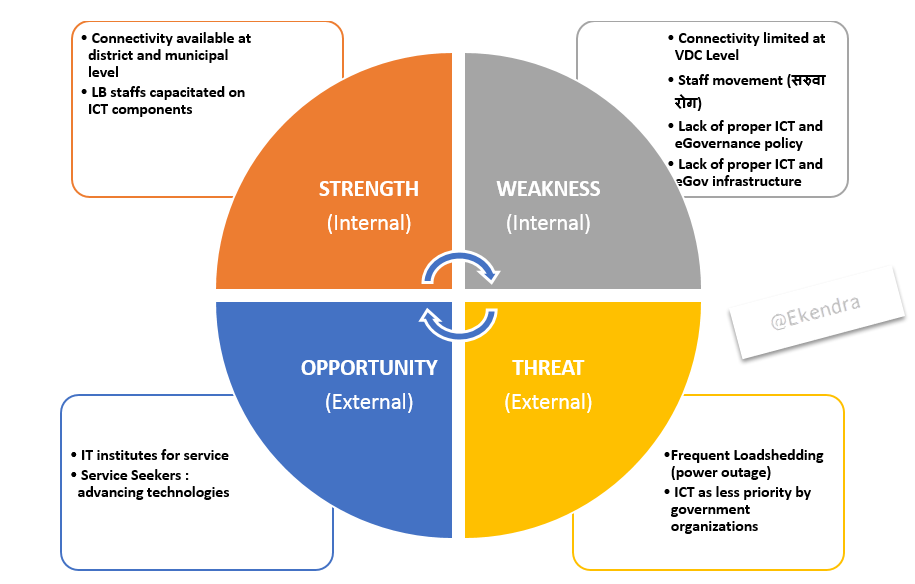
Once the e-governance design are at acceptable level, provincial governments can execute their support and provide information sharing capability at both the horizontal and vertical knowledge sharing, thus providing win win situation for all the government tiers and the citizen levels.
To sum up all the concerned domains to be addressed by an effective e-governance system at provincial government level, we need seamless integration and coverage of
- Respectful legal framework of federalism with respect to e-gov,
- Institutional framework for federalism,
- E-gov powered public financial management, accountability and transparency,
- Well informed Gender equality and social inclusion (GESI),
- ICT based fiscal capacity and government revenues mobilization and tracking,
- Administrative infra and connectivity,
- Skilled and capacitated human resource management and development, and
- Electronic and automated monitoring and evaluation system to facilitate connection from the local to the federal government with this e-governance modality.
Q3. यो प्रश्नको उत्तर नेपालीमा लेख्नुहोस् (sadly this sentence was NOT written in Nepali Unicode in the actual UNDP question.)
विद्युतीय सुशासनका फाइदा मात्र होइन, यसको राम्रो व्यवस्थापन गर्न नजान्दा यसका जोखिम पनि छन् भन्ने व्यहोरा दर्शाउदै संघीय मामला तथा सामान्य प्रशासन मन्त्रीका नाममा एउटा लेख (note) तयार पार्नुहोस ।
(उत्तर: कोकिला नेपाली युनिकोड फन्टमा लेखिएको छ ।)
मिति: २०७७/०३/०८
श्रीमान ………,
मन्त्री, संघीय मामला तथा सामान्य प्रशासन
सिंह दरबार, काठमाण्डौ ।
विषय: विद्युतीय सुशासनका अप्रभावी अभ्यासहरू सम्बन्धमा ।
महोदय,
प्रस्तुत विषयमा यहालाई थाहै होला नेपालमा विद्युतीय सुशासनको सुरुवाती चरण राम्रो रहेको छ । विद्युतीय सुशासन तीनै तहको सरकारमा उपस्थित रहदै आएको छ जसका कारण नागरिकले सरकारी सुविधाको राम्रो उपलब्धता अनुभव गर्न पाएको कुरा हालै प्रकाशित विद्युतीय सुशासन तत्परता सुची (Global e-governance readiness index) ले पनि प्रष्ट पारेको छ । हामी सँग असल अभ्यासका अनेकन उदाहरणहरु हुदा हुदै पनि हालै आएर विद्युतीय सुशासनका व्यवस्थापन पक्ष फितलो हुदा कति सरकारी तहमा सेवाग्राहीहरु मर्कामा पर्न सक्ने पाटाका बारेमा छलफल चल्ने गरेको छ ।
खराब अभ्यासहरु जस्तै डेटा डाटा गोपनीयता (data privacy), सूचना प्रणाली सुरक्षा (information security) तथा मिशन महत्वपूर्ण सूचनाको चुहावट (mission critical information leakage) का पक्षलाई सम्बोधन गर्न असफल हुनुले समग्र नेपाल सरकारका स्थानीय तथा प्रादेशिक स्तरमा विद्युतीय सुशासनका नराम्रा पाटा लाई उदृत गर्न सक्छन । अत एस्तो अभ्यासलाई समयमै सम्बोधन गर्न सकेमा विद्युतीय सुशासन को महत्वपूर्ण उपलब्धि हुने अनुरोध गर्न चाहन्छु ।
——–
विद्युतीय सुशासन विज्ञ
संघीय मामला तथा सामान्य प्रशासन
Note: I’m available for consultation in capacity of e-Governance Specialist in Nepal or ICT/ICT4D consultation.
To cite this article use the following information:
Ekendra Lamsal (2020, November 6). Information Technology (IT) and E-Governance Specialist Questions & Answers for UNDP/PLGSP. Retrieved November 6, 2020 from https://ekendraonline.comgovernance/information-technology-egovernance-specialist-qna/


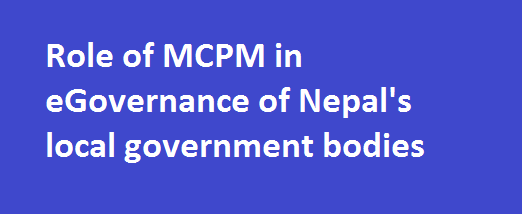
Nepal needs your experience, but are you relative to any matris? Otherwise I see your potential unused.
Great answers btw!